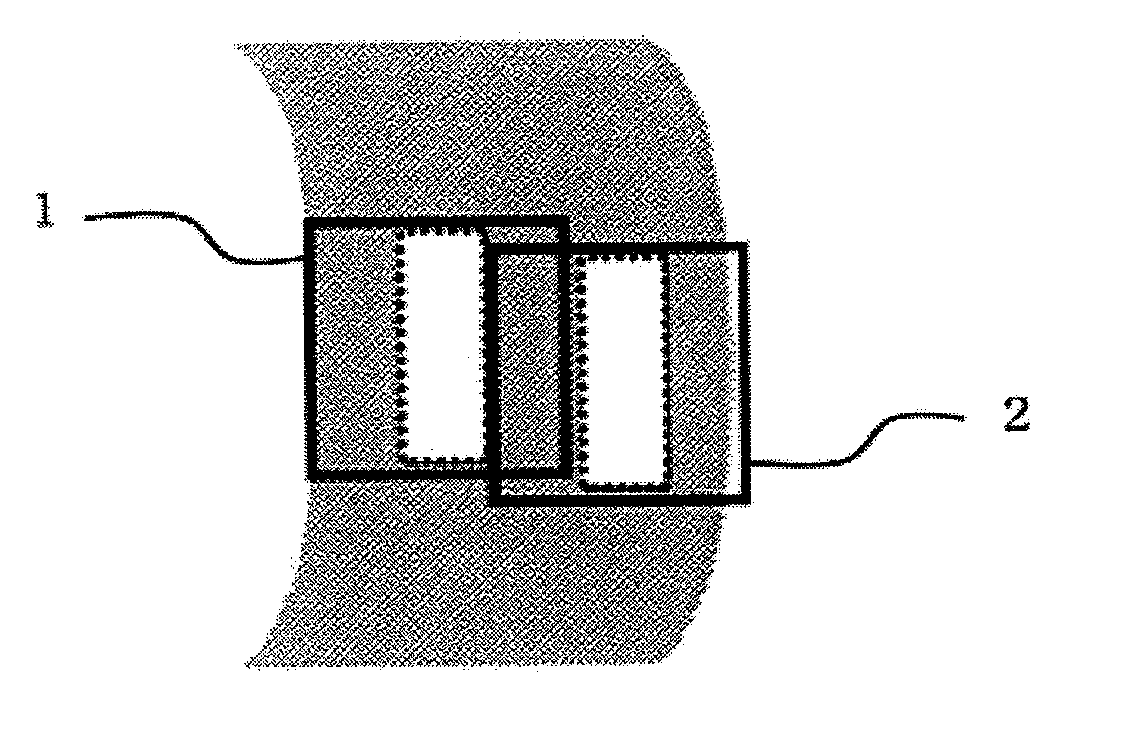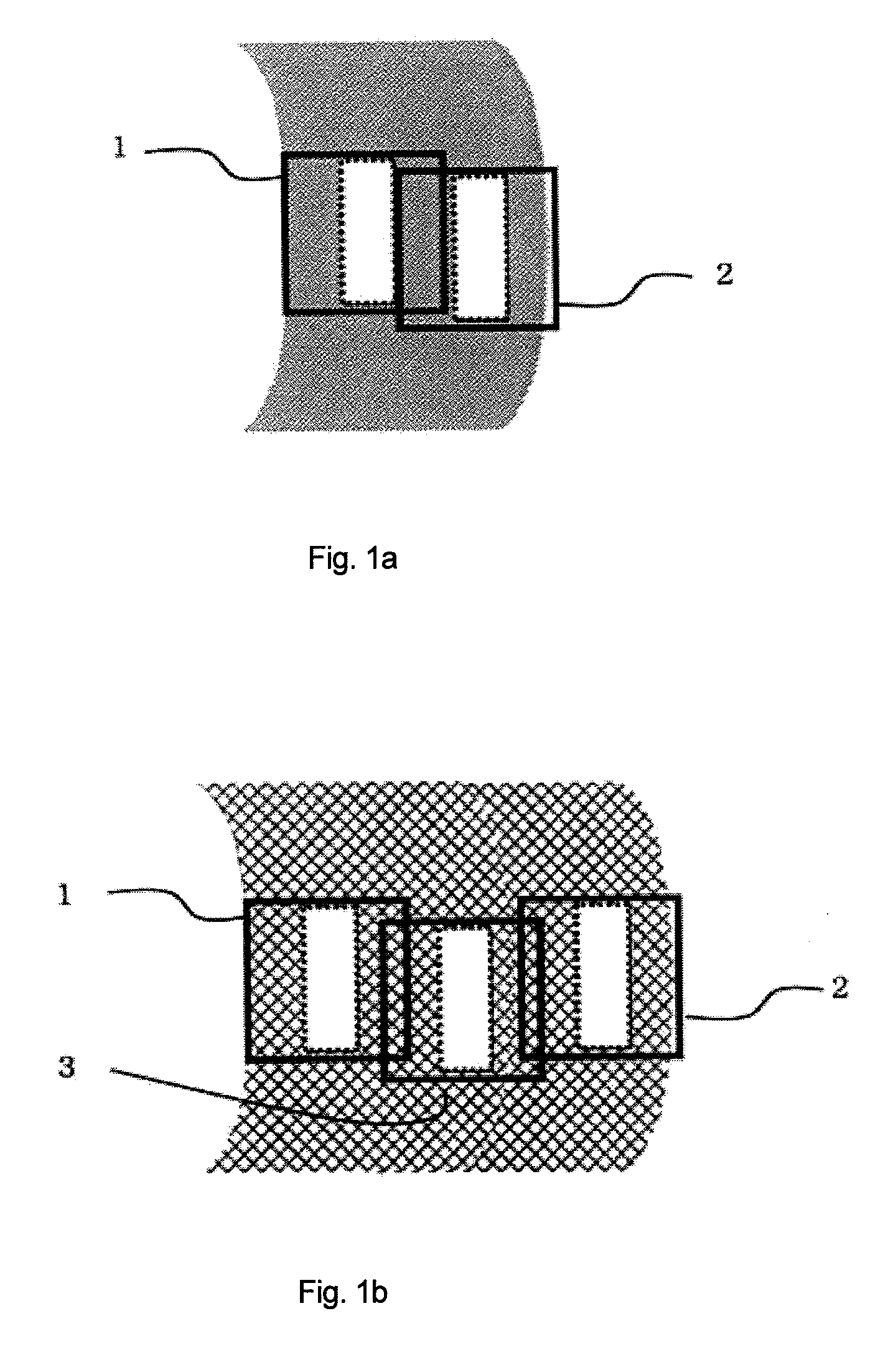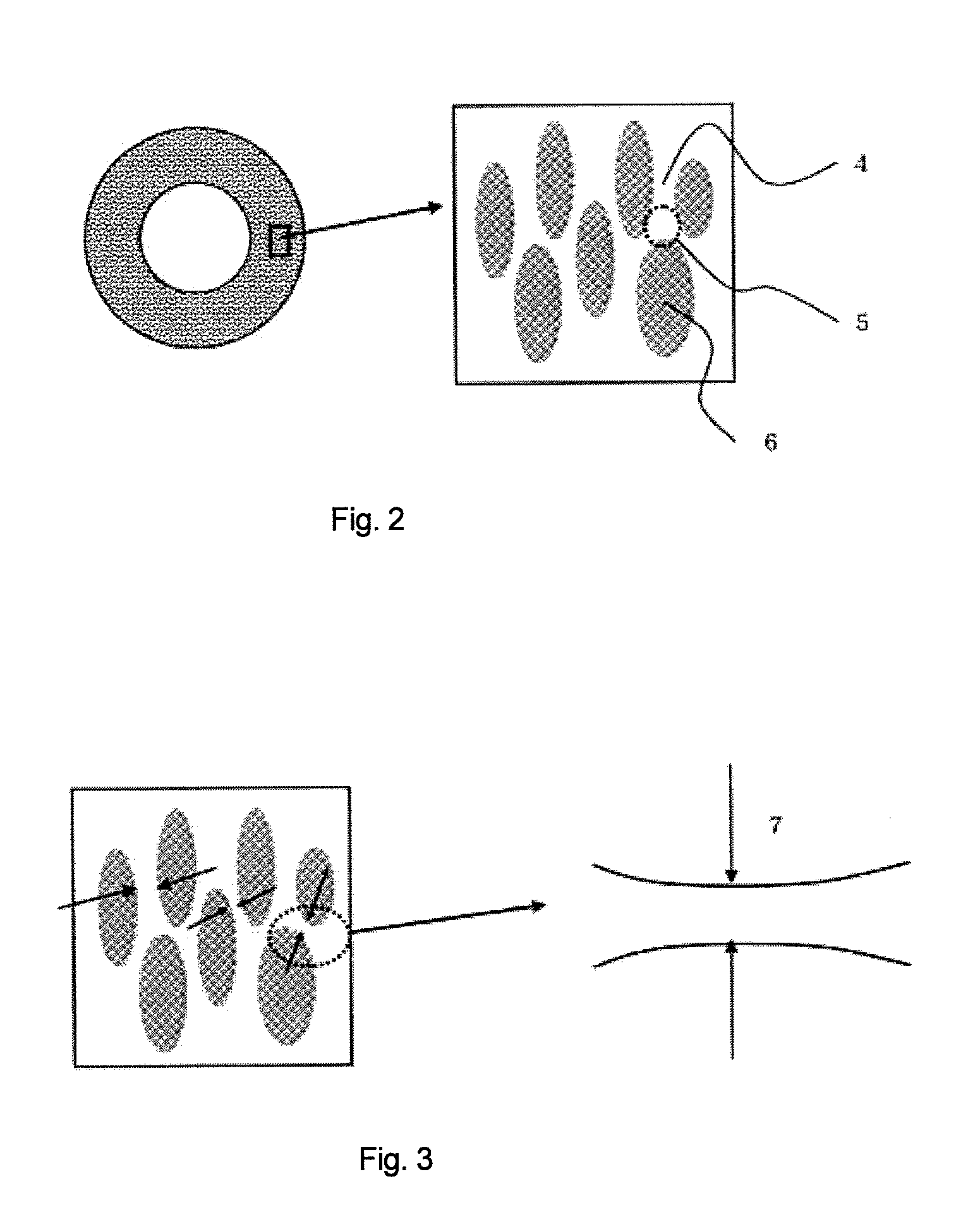Porous hollow fiber membrane for treating blood
a hollow fiber membrane and blood technology, applied in the direction of membranes, filtration separation, separation processes, etc., can solve the problems of membranes that cannot may be mechanically damaged by some factors, and never have as sharp fractionation properties, etc., to achieve excellent fractionation properties, not mechanically damaged with ease, and high mechanical properties
- Summary
- Abstract
- Description
- Claims
- Application Information
AI Technical Summary
Benefits of technology
Problems solved by technology
Method used
Image
Examples
example 1
[0099]Prepared was a membrane-forming stock solution composed of 17 parts by weight of Bis-PSf (P-1700, manufactured by Solvay Co.), 4 parts by weight of PVP (K-90, manufactured by ISP, Inc.), and 79 parts by weight of DMAc (special grade reagent, manufactured by Kishida Chemical Co., Ltd.). As a hollow-making inner solution, a 60% by weight DMAc solution in water was used, and the solution was discharged from a spinneret having a slit width of 50 μm. In this case, the temperature of the membrane-forming stock solution was 40° C. at the time of the discharge. The discharged stock solution was passed through a falling section covered with a hood and then immersed into a coagulation bath made of water, 60° C. in temperature, to be coagulated. At this time, the air gap length and the spinning rate were 400 mm and 30 m / minute, respectively. The resultant was washed with water, and dried to obtain blood treating membranes. The drying temperature and the drying time were 160° C. and 100 s...
example 2
[0101]The same method as in Example 1 was carried out, except that a 50% by weight DMAc solution in water was used as the hollow-making inner solution. Under the spinning conditions, the value of “H / V−T / 4” was 0.06. The impact resistance test was made 10 times in total; however, no leakage was observed.
example 3
[0102]The same method as in Example 1 was carried out, except that a 20% by weight DMAc solution in water was used as the hollow-making inner solution, and the discharge amounts of the membrane-forming stock solution and the hollow-making inner solution were adjusted so as to obtain the dried membrane having a thickness of 40 μm and an inside diameter of 185 μm. Under the spinning conditions, the value of “H / V−T / 4” was −0.05. The impact resistance test was made 10 times in total; however, no leakage was observed.
PUM
| Property | Measurement | Unit |
|---|---|---|
| Length | aaaaa | aaaaa |
| Length | aaaaa | aaaaa |
| Length | aaaaa | aaaaa |
Abstract
Description
Claims
Application Information
 Login to View More
Login to View More - R&D
- Intellectual Property
- Life Sciences
- Materials
- Tech Scout
- Unparalleled Data Quality
- Higher Quality Content
- 60% Fewer Hallucinations
Browse by: Latest US Patents, China's latest patents, Technical Efficacy Thesaurus, Application Domain, Technology Topic, Popular Technical Reports.
© 2025 PatSnap. All rights reserved.Legal|Privacy policy|Modern Slavery Act Transparency Statement|Sitemap|About US| Contact US: help@patsnap.com



